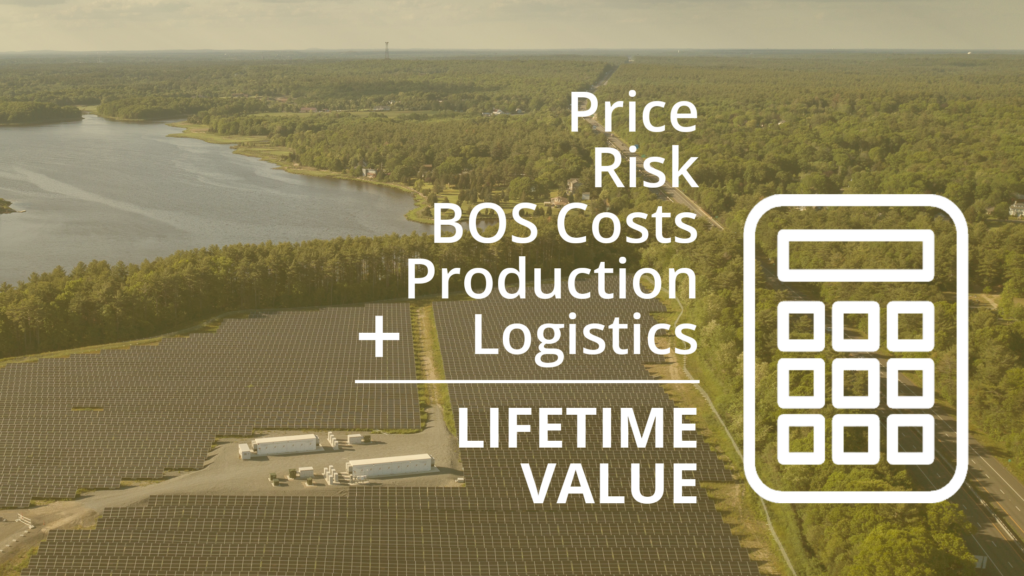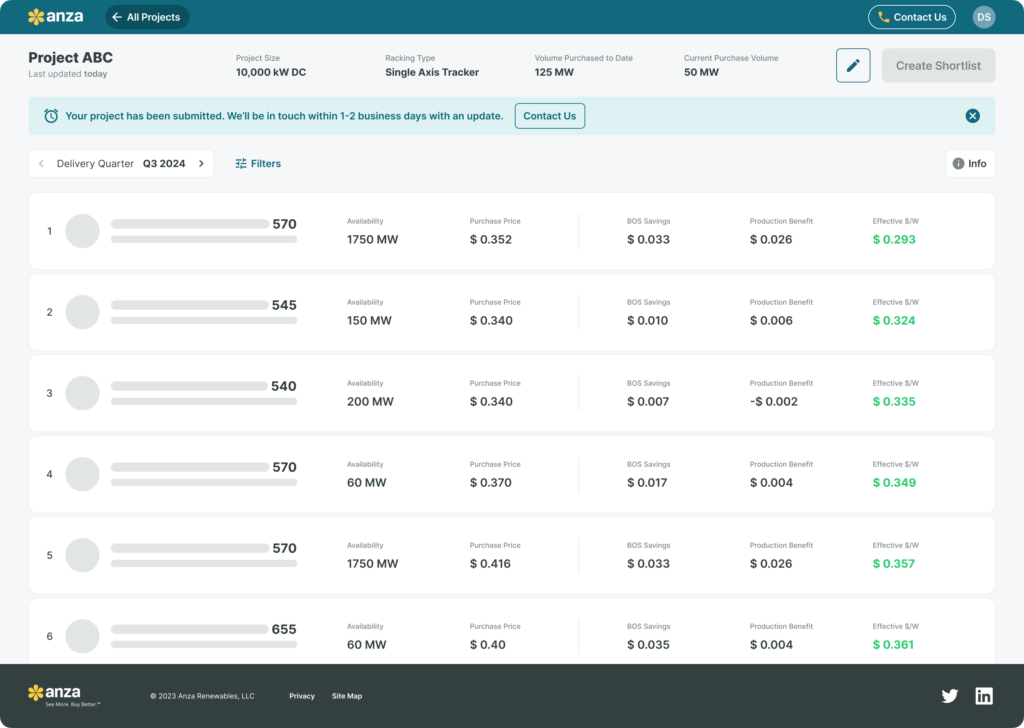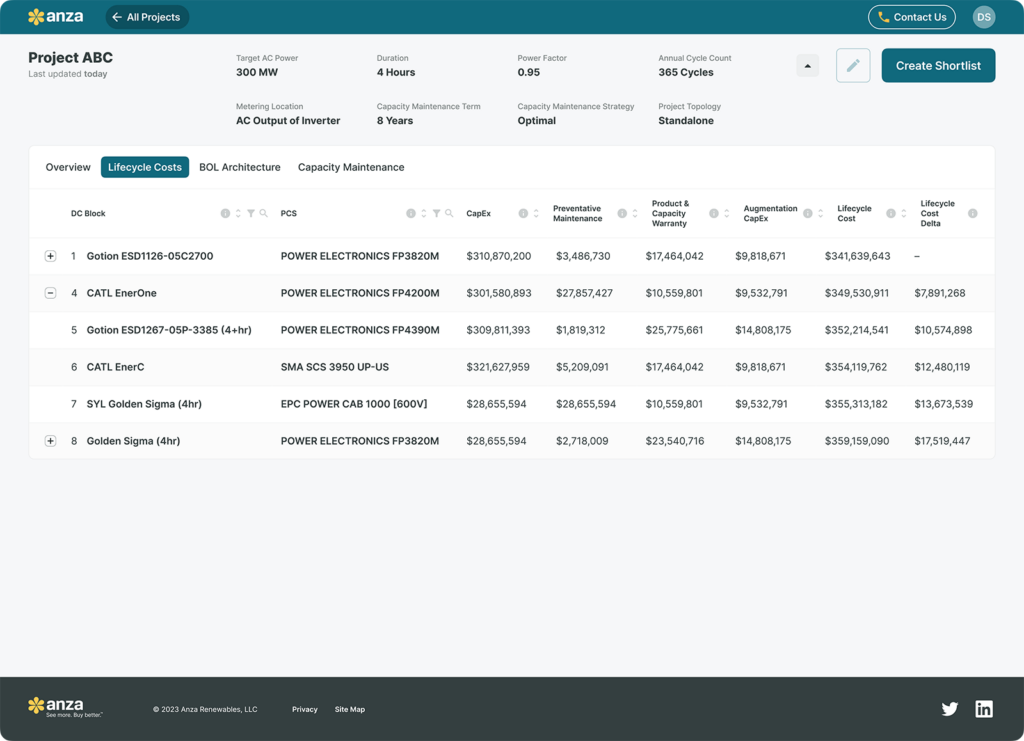
We can show you how low-cost solar panels don’t often equal maximum financial value.
It no longer has to be a race to the bottom. The current process for buying solar modules, and to some degree energy storage equipment, is a fierce fight to find a low cost option that meets buying criteria. Anza is flipping the paradigm, offering you a different way to meet procurement objectives while increasing overall project profits.
How To Shop by Value

- Align incentives among teams so everyone works together and is rewarded to maximize project profit.
- Incorporate a full, 360 degree view to aid the buying decision incorporating price, upfront installation costs, operating costs, revenue and risk.
- Use our data & technology to view instant results based on your project inputs to shop based on all dimensions of project value.
Tools to Evaluate Value on a Full Lifecycle Basis
Solar modules offering
PV MODULE PLATFORM
Once you submit a project in the Anza app, you’ll see 20+ solar panels available for your project delivered in a table. This table includes product details, price, balance of system (BOS) costs, production-related revenue and Effective $/Watt. The table is ranked by the lowest Anza Effective $/W. The Effective $/W is calculated by subtracting BOS savings and production benefit from the module price, so the lower the Effective $/W, the more value is created for your project. To learn more about how you can increase value by shopping by Effective $/W, go to this page.


Storage offering
ENERGY STORAGE PLATFORM
After you submit a battery project in the Anza app, you’ll see our recommended DC block and Power Conversion System (PCS) configurations in a table. These configurations will be ranked in order of total life cycle cost. This is calculated by summing installation and operating costs, including preventative maintenance, augmentation install costs, and DC block and PCS warranty costs. Operating costs include the optimal augmentation scenario for your project. Read our blog to learn how you can improve your returns by focusing on full life cycle costs.